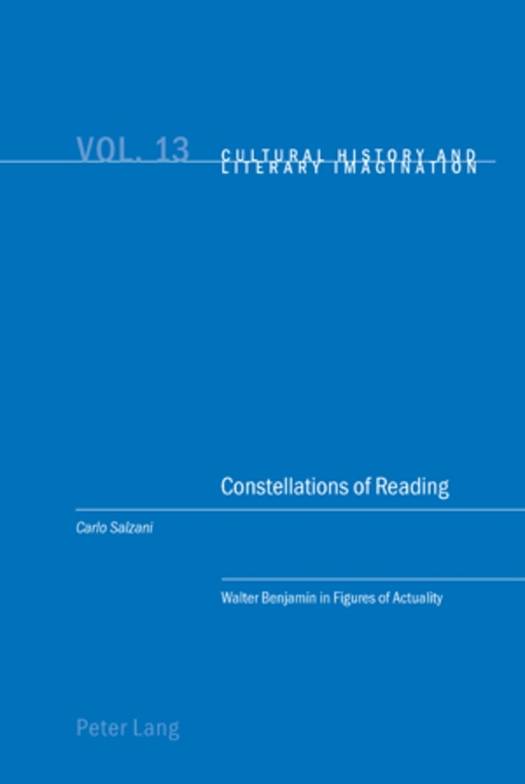
Je cadeautjes zeker op tijd in huis hebben voor de feestdagen? Kom langs in onze winkels en vind het perfecte geschenk!
- Afhalen na 1 uur in een winkel met voorraad
- Gratis thuislevering in België vanaf € 30
- Ruim aanbod met 7 miljoen producten
Je cadeautjes zeker op tijd in huis hebben voor de feestdagen? Kom langs in onze winkels en vind het perfecte geschenk!
- Afhalen na 1 uur in een winkel met voorraad
- Gratis thuislevering in België vanaf € 30
- Ruim aanbod met 7 miljoen producten
Zoeken
€ 185,45
+ 370 punten
Omschrijving
How to read Walter Benjamin today? This book argues that the proper way is through an approach which recognizes and respects his own peculiar theorization of the act of reading and the politics of interpretation that this entails. The approach must be figural, that is, focused on images, and driven by the notion of actualization. Figural reading, in the very sui generis Benjaminian way, understands figures as constellations, whereby an image of the past juxtaposes them with an image of the present and is thus actualized. To apply this method to Benjamin's own work means first to identify some figures. The book singles out the Flâneur, the Detective, the Prostitute and the Ragpicker, and then sets them alongside a contemporary account of the same figure: the Flâneur in Juan Goytisolo's Landscapes after the Battle (1982), the Detective in Paul Auster's New York Trilogy (1987), the Prostitute in Dacia Maraini's Dialogue between a Prostitute and her Client (1973), and the Ragpicker in Mudrooroo's The Mudrooroo/Müller Project (1993). The book thereby, on the one hand, analyses the politics of reading Benjamin today and, on the other, sets his work against a variety of contemporary aesthetics and politics of interpretation.
Specificaties
Betrokkenen
- Auteur(s):
- Uitgeverij:
Inhoud
- Aantal bladzijden:
- 392
- Taal:
- Engels
- Reeks:
- Reeksnummer:
- nr. 13
Eigenschappen
- Productcode (EAN):
- 9783039118601
- Verschijningsdatum:
- 22/12/2008
- Uitvoering:
- Paperback
- Formaat:
- Trade paperback (VS)
- Afmetingen:
- 152 mm x 229 mm
- Gewicht:
- 521 g

Alleen bij Standaard Boekhandel
+ 370 punten op je klantenkaart van Standaard Boekhandel
Beoordelingen
We publiceren alleen reviews die voldoen aan de voorwaarden voor reviews. Bekijk onze voorwaarden voor reviews.









